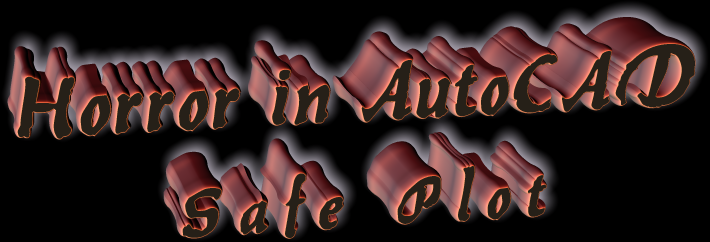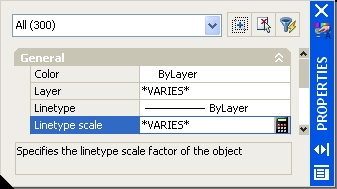| Home | Products | Free Stuff | Downloads | Buy On-Line | Articles | Contact us |
|
|
||||||
...Again...Lost hidden-center-phantom-dashed lines, all lines are solid on paper! Five (10, 20...) sheets thrown in basket, wasted time and money...LTscale was changed in Modelspace to make a distinction between hidden and continuous lines, and was not restored to 1 in PaperSpace before printing.
Wrong representation of hidden lines (LTscale = 12) || Correct representation of hidden lines on paper (LTscale = 1)
The following AutoLISP - new command PLO provides SAFE PLOT: first the value of LTscale checked and, if it is not equal 1, set LTscale to this value, then PLOT command.
(DEFUN C:PLO()(if (> (getvar
"LTSCALE") 1)(setvar "LTSCALE" 1))(initdia)(command ".plot")) Next time you send the drawing for printing, enter the command PLO - Plot window appears on the screen. There is no regeneration of all ViewPorts, the lines on screen still may look solid, not hidden, but don't worry, on the paper you will get the correct representation. The problem solved!... Not really. There is another possible issue - linetype scale chaos in Modelspace.You know, when dashed (not continuous) line is too short, in order to make it dashed on paper somebody likes to change linetype scale of that line; set it, for instance, to 0.5. Somebody likes DASHED (longer lines, bigger space) type of lines and hates HIDDEN (more dense type) and changes linetype scale of that line to 0.4. Finally before printing someone decided to set LTscale for layout equal 0.75, then after short hesitation - new change 0.6. Perfect! After that another CAD person is assigned to complete the drawing someone started. He or she is trying to set LTscale to normal value equal 1 and getting unexpectedly bad print.I would suggest to follow the rule:
NEVER change linetype scale, always use 1Instead of playing with linetype scale of objects add in acad.lin file custom linetypes, more dense (samples shown below) and use them in drawing.
;; LINES 4 (TWO TIMES MORE DENSE THAN CORRESPONDING
HIDDEN2 OR DASHED2 etc.) In current drawing you can globally change linetype scale to 1: select all objects and in Properties window change *VARIES* against Linetype scale to 1.
Last thing for consideration: PSltscale value. Traditionally it is set to 1: ViewPorts can have varying magnifications, yet display linetypes identically.
But if ALL ViewPorts on ALL layouts will have the same scale, you can set PSltscale to 0, once set LTscale equal to ViewPort scale (e.g. 12 for scale 1" = 1'-0") and use standard command PLOT (not PLO).
Finally, couple remarks - common sense in using PaperSpace:
1. When the drawing will have only one layout and the drawing is simple and all parts of the drawing require the same scale drafting, you may not need to use PaperSpace. All drafting can be done in ModelSpace. Classical case - shop drawings of piece details in steel detailing.
2. Even if the drawing is assuming using PaperSpace, you may not always need to create new objects in ModelSpace (sure, title block and border should be in PaperSpace). For instance, if layout is only notes and abbreviations, why don't you place all text/Mtext objects directly on PaperSpace - it is easier. Alex Borodulin 11/18/09
|
||||||


